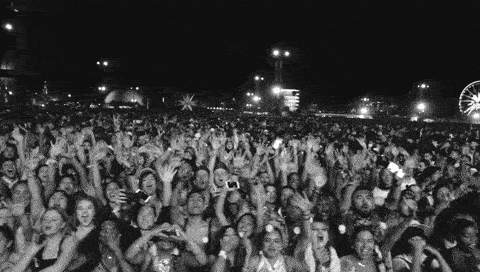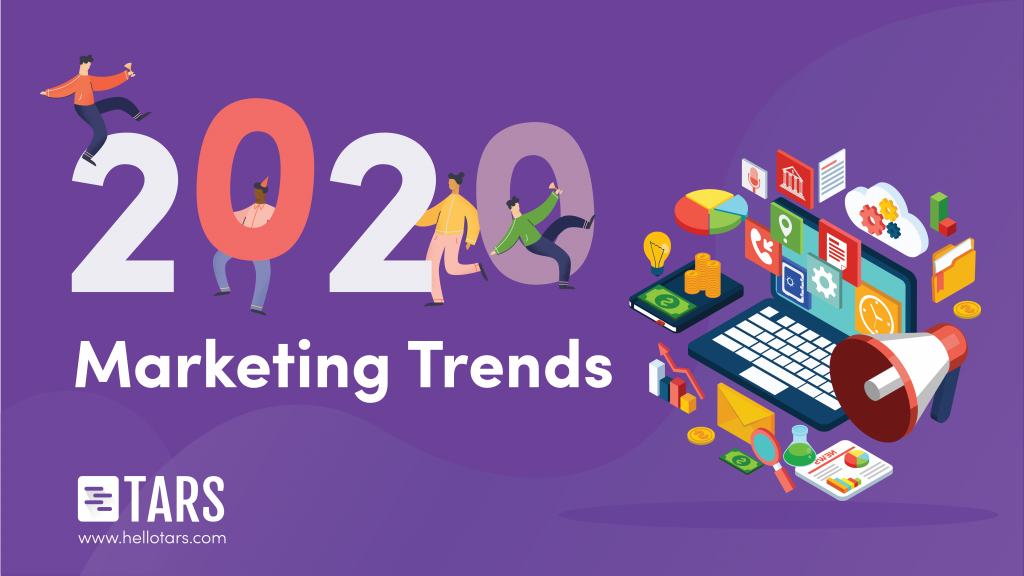Well, we’ve made it around the sun yet another time and guess what!
I’m pretty sure that as far as digital marketing is concerned 2020 will be the same as 2019!
Don’t get me wrong, a bunch of insanely cool stuff will still happen in the industry, but I’m pretty sure that the vast majority of it will just be the trends we saw in 2019 becoming considerably more advanced!
Soooooooooo think of this as more of a refresher on all the stuff you should already be caring about 👇
1. Brand Building
In 2019, more so than in previous years, marketers started to realize that to see long-term returns on their campaigns they’d need to build a loyal fanbase. Rather than optimizing campaigns to bring new traffic through the door they started to optimize campaigns to convert that traffic into returning site visitors (i.e. an audience)

The underlying logic for this approach is that it is way easier to convert someone who knows who you are from consuming your blog/newsletter/podcast/webinar every week than a prospect who has landed on your page for the first time through a Google or Facebook Ad.

At TARS we have been massive beneficiaries of this approach so we can attest to its efficacy.
We’ve found that it is way easier to get new visitors to our site to subscribe to our newsletter than subscribe to our product, because, well… signing up for an email newsletter takes a lot less time, effort and money than signing up for our builder.
More importantly, we’ve found that it is way easier to convert people who read our content every week into loyal customers than people who come straight off of a search or social media ad.
In 2020, we anticipate that more digital marketers will discover the power of building an audience and start to invest in their brand. Additionally, businesses like us who had this realization in 2019 will try to come up with newer, more creative ways to keep their audience locked into their brand. For us, we think that webinars with live chatbot builds will be the path that we take to achieving this.
2. Voice Search
Over the past couple of years, voice search has gone from a novelty feature to a mainstay in millions of customer households across the world. Assistants like Amazon Alexa and Google Assistant have seen widespread adoption.

This poses marketers with a unique opportunity.
As a greater share of searches occurs through voice, marketers need to invest effort into understanding how to leverage this tech to get their businesses into that coveted voice search result.
The tricky part is that unlike on regular text search where users are presented with pages of results that they can browse through, assistants like Alexa and Google choose the single result they deem best to say out loud to users. In other words, you and your competition are competing for way less space in the SERP.
Going a step further, businesses can couple the capability of voice search with the power audience-building by creating custom Alexa skills and Assistant Actions to enable meaningful interactions (*cough* purchases *cough*) right in the voice search interface.
F&B companies have been particularly adept at doing this already with companies like Nestle, Patron Tequila and Campbell’s creating food and drink recipe assistants on the big voice platforms, but 2020 could be the year where other industries and more importantly smaller, local businesses get in on the action.
3. Position 0
Speaking of optimizing content for voice search, for a long time now, search engines have been creating snippets of the featured content, scraped from existing results to appear before the regular organic results in what marketers now call “position 0” of the SERP.
These snippets are prime real estate in the SEO game for multiple reasons. First, since 62.5% of mobile searches and 34.4% of desktop searches result in a position 0 result, these snippets are eating an ever-growing share of the user attention allocated to search. In other words, if you want your content/page to stand out from the competition there’s a good chance that you need to be in that position 0 spot.
Second, and related to the previous trend on this list, over 40% of voice search results are pulled from featured snippets, making featured snippets one of the best ways of having your business voice search optimized
4. Video Content
This trend is particularly salient for us at TARS, because 2019 was the year we really went deep on video content. If you aren’t aboard the hype train yet, I can confirm, from personal experience that video truly works.
Human beings are visual creatures. Most people do not have the attention or inclination to read an entire blogpost because it takes time and effort to do so, but we are more than willing to watch a video even if it’s 10+ mins long because we can kick back and stare at the screen while the info seeps into our brain.
Also, one report suggests 87% of marketing professionals use video as a marketing tool.
So, from a marketing perspective, videos help you capture a greater share of your customer’s attention and more attention translates into more conversions. It’s as simple as that!

To be clear, this isn’t a particularly new or innovative trend. Video has been kicking around for a long time now. But, video content in certain types of businesses (particularly small and mid-sized enterprises) is still not as common as it should be for the sorts of returns it yields.
Looking at our customers, for example, I have had dozens of conversations with TARS users who like our videos but aren’t using videos in their businesses themselves. All you really need is a webcam, a mic, a laptop and good recording software like Soapbox, loom or even zoom.
Now, understandably a lot of people are scared to jump on the video train. We were positively petrified of doing so when we started out in Feb of this year. But once you do it a couple of times the fear melts away and your videos start to get better.
In fact, the more comfortable you get, the more you start to experiment and before you know it you’ve gone from creating grainy screen recordings like this:
To full HD 1hr+ long webinars with dozens of people from around the world attending like this:
5. Live Video
While we’re on the topic of webinars, I decided to add live video as a separate trend on this list because within the broader category of video, it is in a league of its own.

For some reason, viewers like knowing that the person on the other side of the video is actually present while they are watching the video, and that appreciation translates into some legit engagement gains.
We’ve run 3 live webinars now, running pretty minimal outreach on them and the results have been pretty awesome. A handful of people have attended every single one of them almost like it’s a weekly TV show that they tune into, which is something every marketer dreams of!

We highly recommend that you give Live video a look in 2020 if you haven’t already done so.
6. PPC ads for Content
The idea behind PPC ads for content is simple. Run ads on platforms like Google, Facebook and LinkedIn, but instead of sending people to your website or a landing page showing off your product, yous end them to a piece of content (e.g. podcast, webinar, newsletter, blog post, white paper) instead.
We borrowed this prediction from Acquisio on our list last year, and guess what! We actually tried it out and it has been extremely successful.
Over the last couple of months, we’ve been using our case studies as a lead magnet on LinkedIn ads and we’ve been able to generate dozens of high-quality enterprise leads.

Not many companies out there are doing this yet, but I highly recommend giving it a try this year, because customers (especially on social media) are way more likely to click onto a piece of content than your regular old landing page.
7. Chatbots
Back in 2015, when we started out with chatbots, people looked at us quizzically when we talked about our tech. In 2019, for the first time, over 90% of the marketers we spoke with knew what a chatbot was and was pretty sure that they needed one in their campaigns.
A considerable proportion of those marketers followed through and actually built a marketing chatbot, but most of them are yet to do so!
We’re optimistic that in 2020, chatbots will become a ubiquitous part of the marketing stack because the engagement gains are just too good to pass up on.

As the competition for user attention continues to heat up in 2020, marketers will need to look for innovative ways to keep people engaged and chatbots are undeniably one of the best ways to achieve this.

Ish is the co-founder at Tars. His day-to-day activities primarily involve making sure that the Tars tech team doesn’t burn the office to the ground. In the process, Ish has become the world champion at using a fire extinguisher and intends to participate in the World Fire Extinguisher championship next year.

0 Comments on "7 Digital Marketing Trends To Look Out For In 2020"